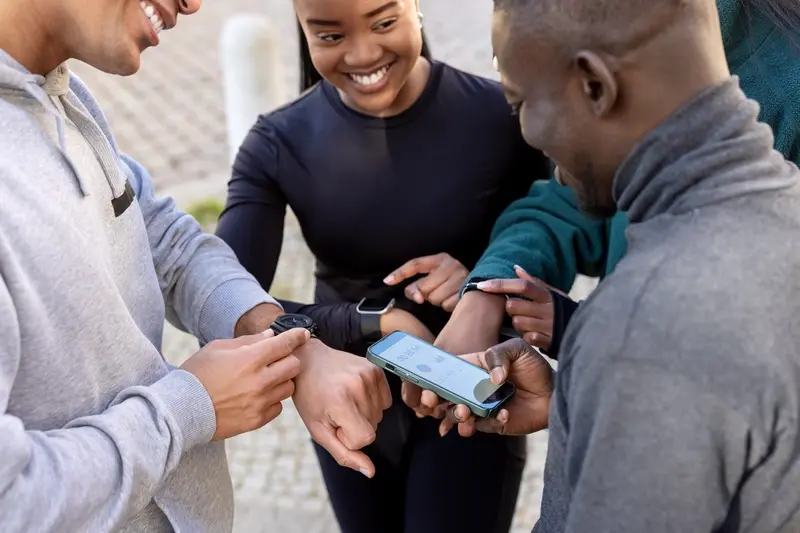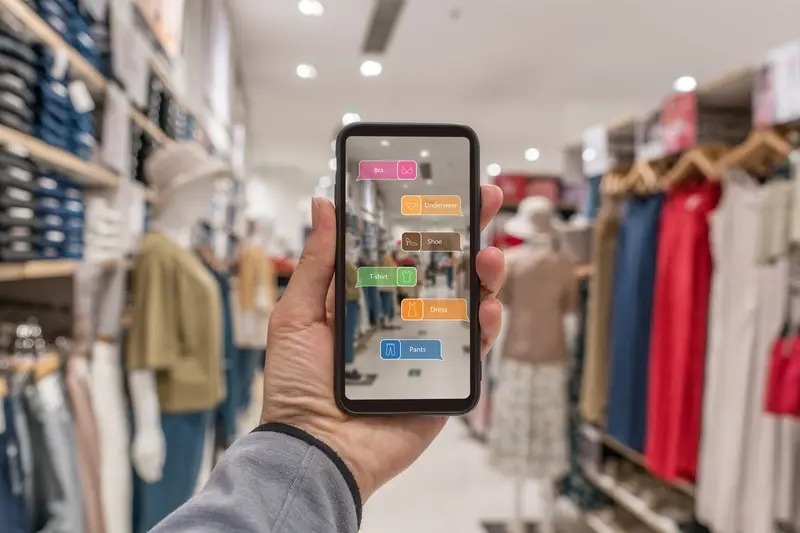Can PWAs Access My Phone's Camera And GPS Like Regular Apps?
Did you know that 58% of people check their phones within the first hour of waking up? That's a staggering number when you think about it—and it shows just how central mobile apps have become to our daily routines. But here's what's interesting: not all of those apps people are opening are actually installed on their devices. Some are progressive web apps that work almost exactly like regular apps, including accessing your phone's camera and GPS.
The question of whether progressive web apps can tap into your device's hardware features is one I get asked all the time. And honestly, it's a brilliant question because the answer affects everything from how you plan your app project to what kind of user experience you can deliver. The short answer is yes—but there's more to it than that.
Progressive web apps have evolved to bridge the gap between web and native functionality, but understanding their capabilities requires looking beyond the surface
What makes this topic particularly fascinating is how rapidly progressive web app functionality has expanded over recent years. Features that were once exclusive to native apps are now accessible through web browsers, though with some important caveats. Whether you're a business owner trying to decide between a PWA and a native app, or just curious about what's happening when you grant camera permissions to a website, this guide will walk you through everything you need to know about progressive web app device access and functionality.
What Are Progressive Web Apps?
Progressive Web Apps—or PWAs as we call them in the industry—are web applications that look and feel like native mobile apps but run through your web browser. Think of them as websites that have been supercharged with app-like features. They can work offline, send push notifications, and yes, access your phone's camera and GPS (which we'll explore in detail later).
The beauty of PWAs lies in their simplicity from a user's perspective. You don't need to download them from an app store, wait for installation, or worry about storage space. You simply visit a website, and if it's a PWA, your browser will often prompt you to "add to home screen". Once you do that, it sits on your phone just like any other app.
Key Features of PWAs
- Work offline or with poor internet connections
- Send push notifications to your device
- Access device features like camera and location
- Automatic updates without app store approval
- Responsive design that works on any device size
- Secure connections through HTTPS
What makes PWAs particularly interesting is that they bridge the gap between web and mobile apps. Companies like Twitter, Pinterest, and Starbucks have all built successful PWAs that offer nearly identical experiences to their native apps—but they're actually running in your browser.
Camera Access in PWAs
Right, let's talk about something that gets developers excited and users a bit nervous—camera access. The good news is that progressive web apps can absolutely tap into your phone's camera, and they do it pretty well these days. When I first started working with PWAs, camera functionality was sketchy at best; now it's become one of those features that just works.
Your PWA can access both front and rear cameras using something called the MediaDevices API. This means users can take photos, record videos, and even do fancy things like barcode scanning—all without downloading a native app. The browser handles the heavy lifting, which is brilliant for developers and users alike.
What Can PWAs Actually Do With Your Camera?
The functionality is quite impressive. PWAs can capture still images, record video clips, switch between front and rear cameras, and apply basic filters or effects. Some can even handle more advanced features like adjusting resolution or controlling flash settings, though this depends on the device and browser you're using.
Always test camera features across different browsers and devices—Safari on iOS can be particularly picky about camera permissions compared to Chrome on Android.
Browser Support and Limitations
Here's where things get a bit technical. Camera access works brilliantly on most modern browsers, but there are some quirks. iOS Safari was notoriously slow to support camera features properly, though Apple has made significant improvements. Android browsers generally play nice with camera functionality from the start.
- Chrome and Edge offer the best camera support across platforms
- Firefox supports basic camera functions but may struggle with advanced features
- Safari on iOS requires specific handling for reliable camera access
- All browsers require HTTPS for camera permissions to work
The main thing to remember is that camera access in PWAs relies on web standards, which means it's constantly improving. What couldn't be done last year might be possible now, and the gap between PWA camera functionality and native apps continues to shrink.
GPS and Location Services
Location services are where PWAs really shine—and I say that having built countless apps that rely on GPS data. PWAs can access your phone's location just as easily as native apps, which opens up a world of possibilities for developers.
When a PWA wants to know where you are, it uses something called the Geolocation API. This clever bit of technology taps into your phone's GPS, Wi-Fi networks, and mobile towers to pinpoint your exact location. The accuracy is impressive; we're talking about precision within a few metres in most cases.
What Location Features Work in PWAs?
PWAs can handle most location-based features you'd expect from a regular app. They can track your current position, monitor location changes as you move around, and even work with mapping services to show directions. I've seen PWAs that do everything from food delivery tracking to fitness route recording.
The process is straightforward: the PWA requests permission to access your location, you grant it (or don't), and then it can start using that data. The browser handles all the heavy lifting—you won't notice any difference compared to using a native app.
Common Location-Based PWA Features
- Real-time location tracking for delivery services
- Store locators that show nearby shops
- Weather apps that automatically detect your area
- Fitness tracking for running and cycling routes
- Navigation and mapping services
- Location-based reminders and notifications
The beauty of location services in PWAs is that they work across all devices and platforms without any extra setup from users.
Other Device Features PWAs Can Use
Beyond cameras and GPS, progressive web apps can tap into quite a few other device features that you might not expect. Push notifications work brilliantly—users get alerts just like they would from a native app, even when the PWA isn't open. The vibration API lets developers make phones buzz for feedback, which is perfect for games or confirmation messages.
PWAs can access your device's accelerometer and gyroscope too, meaning they can detect movement and rotation. This opens up possibilities for fitness apps that count steps or games that respond to tilting your phone. They can also use the ambient light sensor to automatically adjust brightness, making the experience more comfortable for users.
Storage and Media Access
File system access has improved loads recently—PWAs can now read and write files directly to your device in many browsers. They can access your photo gallery, play audio in the background, and even use speech recognition for voice commands. Bluetooth connectivity is possible too, letting PWAs connect to external devices like fitness trackers or smart home gadgets.
The gap between what PWAs can do and what native apps can do gets smaller every month as browser support improves
Payment processing works seamlessly through the Payment Request API, making checkout experiences smooth and secure. Battery status, network information, and device orientation are all accessible, giving developers plenty of tools to create rich, responsive experiences that feel genuinely native.
Limitations Compared to Native Apps
Right, let's be honest about this—PWAs are brilliant but they're not perfect. There are still some things that native apps can do that PWAs simply can't match, and if you're considering building one, you need to know what you're getting into.
The biggest limitation I see is with background processing. Native apps can run tasks in the background much more freely than PWAs can. Your banking app might check for new transactions every few minutes, but a PWA version would be much more restricted in how often it could do this. Battery life is the main reason browsers limit this functionality.
Access to System Features
Whilst PWAs can access cameras and GPS (which is what we're talking about here), they still can't touch some deeper system features. Things like your phone's contact list, calendar, or file system are mostly off-limits. Native apps can also integrate better with your phone's settings and other apps—something PWAs struggle with.
App store distribution is another sticky point. You can't easily get PWAs into the main app stores the same way you can with native apps, which means less discoverability for users who browse for new apps that way.
The performance gap is narrowing, but native apps still have the edge for complex, graphics-heavy applications like games or video editing tools.
Privacy and Security Considerations
When you're dealing with any technology that can access your phone's camera and GPS, privacy becomes a big deal. Progressive web apps handle this quite differently from regular mobile apps—and in some ways, they're actually more secure.
The main difference is that PWAs run inside your web browser, which acts like a security guard. Every time a progressive web app wants to use your camera or location, your browser will ask for permission first. You'll see a popup asking "Allow this site to access your camera?" or something similar. This happens every single time, which means you're always in control.
Always check what permissions you're granting to any progressive web app. If a simple calculator app is asking for your location, that's a red flag!
Regular mobile apps can sometimes access device features in the background once you've given permission. PWAs can't do this as easily—they need your browser's approval each time. This extra layer of protection means your personal information stays safer.
What Data Can PWAs Actually Access?
Progressive web apps can only access the device functionality that web browsers allow. This includes:
- Camera and microphone (with permission)
- Location services (with permission)
- Push notifications
- Basic device storage
- Network connectivity status
The good news is that PWAs can't dig deep into your phone's system files or access sensitive data without explicit permission. Your browser acts as a protective barrier between the progressive web app and your personal information.
Making the Right Choice for Your Project
After working with countless clients over the years, I've learned that choosing between a PWA and a native app isn't really about what's technically possible—it's about what makes sense for your specific project. Both can access your phone's camera and GPS, but they do it differently.
If you're building something that needs to work across all devices without asking users to download anything, a PWA might be perfect. They're brilliant for things like restaurant booking systems, news sites, or simple productivity tools. You get camera access for profile photos and location services for finding nearby branches. The trade-off? You won't get quite the same smooth performance as a native app, and some advanced features might be off-limits.
When Native Apps Still Win
Native apps are still the best choice when you need every ounce of performance or want to use specialized hardware features. Gaming apps, photo editing tools, or anything requiring complex camera functions will work better as native apps. They also give you more control over the user experience and can work completely offline.
The honest truth? Most projects can work well as either PWAs or native apps. The decision often comes down to your budget, timeline, and whether you want to maintain separate apps for different platforms. Don't overthink it—both can do more than you might expect.
Conclusion
So there you have it—progressive web apps really can access your phone's camera and GPS, along with quite a few other device features that might surprise you. They're not just glorified websites anymore; they've evolved into something much more capable. Sure, they might not have every single bell and whistle that a native app offers, but for most projects, they get pretty close.
The gap between what PWAs can do and what native apps can do keeps shrinking. We're talking about camera access, location services, push notifications, offline functionality—the works. The privacy controls are solid too, which means users stay in control of what they share and when.
If you're trying to decide between a PWA and a native app for your project, think about what you actually need rather than what sounds impressive. Do you need deep integration with the operating system? Go native. Want something that works across all platforms without the headache of maintaining separate codebases? A progressive web app might be your answer.
At Glance, we've seen clients achieve brilliant results with both approaches. The key is matching the technology to your specific needs, budget, and timeline. PWAs have come a long way, and honestly, they're only getting better.
Share this
Subscribe To Our Learning Centre
You May Also Like
These Related Guides

Can Wearable Apps Work Independently Without A Phone?

Can I Create One App That Works On Phones And Smartwatches?



